50 Things We Love about Mr. Rogers
March 22, 2018
By Audrey St. Clair ’03

It’s been 50 years since the debut of Mister Rogers’ Neighborhood, so what better way to honor our most famous alumnus than by celebrating 50 ways he’s made a lasting impact on Rollins and the world.
1. His testimony helped save the VCR and paved the way for Netflix. In the early 1980s, some entertainment producers didn’t think people should be able to record shows at home, so Universal Studios filed a lawsuit against Sony Corporation that went before the Supreme Court. Rogers testified for Sony saying he did not object to people recording his shows because he was in favor of a person’s ability to be “more active in the control of his or her life, in a healthy way.” The Supreme Court ruled in favor of Sony, and the case has served as a precedent for other popular recording and streaming technologies, including iPhones and Netflix.
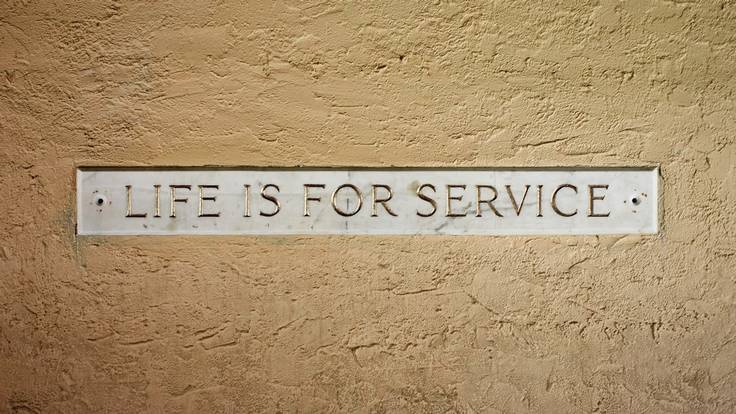
2. He was inspired by the “Life is for Service” motto engraved in marble near Strong Hall. The Rollins music major carried a photo of the engraving in his wallet for the rest of his life.
3. He spoke at the speed of 124 words per minute. According to research, one reason why children were (and still are) so captivated by Mister Rogers’ Neighborhood could be that Rogers’ speech was the perfect pace for children ages 3 to 5 to process. The average adult prefers to listen to speech at a faster pace of 150 to 160 words per minute.
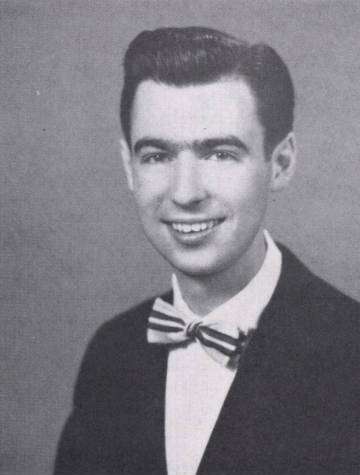
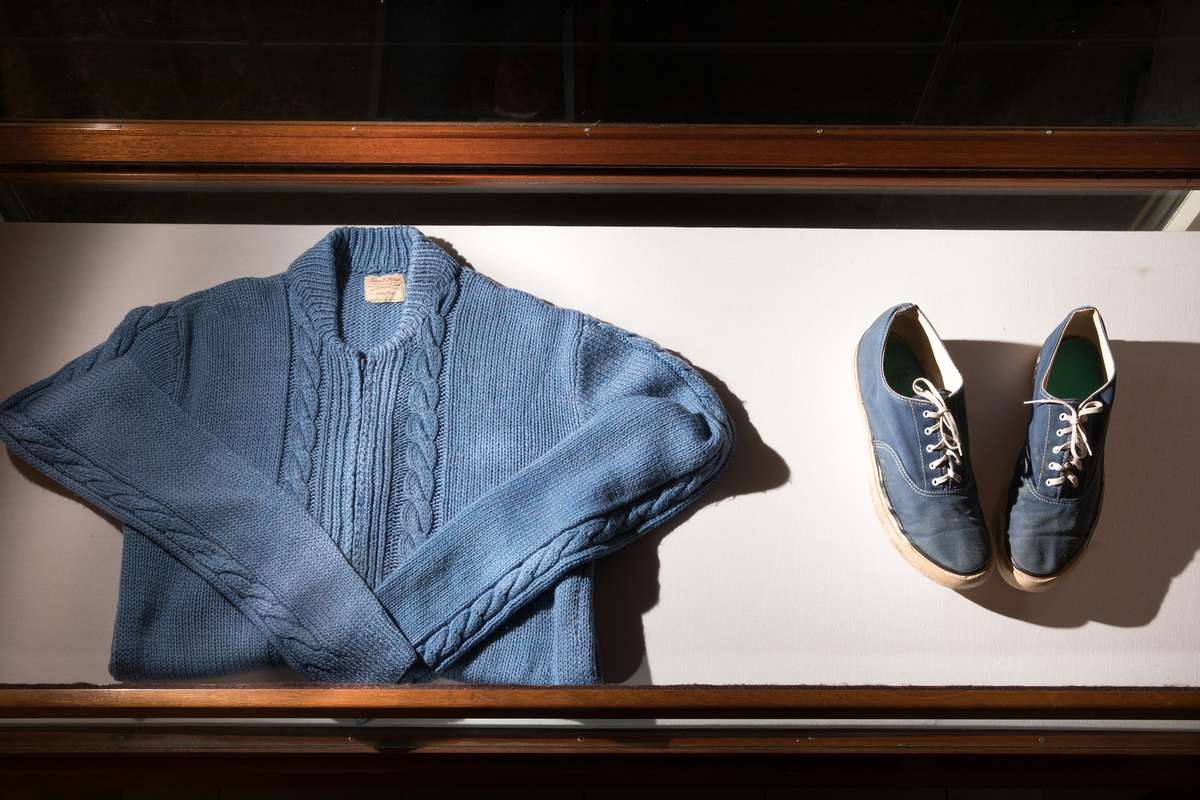
4. His sweater and sneakers are housed at Rollins. Rogers famously wore zip-front cardigans that were knitted by his mother. A blue cardigan and a pair of sneakers are among Rollins’ most treasured archives. Another cardigan—a red one—is kept at the Smithsonian.
5. He spent his winters in Winter Park, Florida, in a house near Rollins College. Rogers and his wife, Joanne Byrd Rogers ’50, enjoyed an escape from the cold winters of their hometown of Pittsburgh, Pennsylvania, to spend January in the sunny city of their alma mater—the place where they first met. Executive Assistant for Alumni Engagement Sara Patrick ’08 remembers when she met Mister Rogers in her neighborhood. “Some of my favorite childhood memories are from the time my family and I spent with Fred and Joanne Rogers having afternoon teas and piano concerts,” Patrick says. “I was 8 years old and it was just like having him step out of Mister Rogers’ Neighborhood and into my home.” To honor the Rogers family, the City of Winter Park erected a sign on the street that reads, “It’s a beautiful day in this neighborhood.”

6. His family foundation established the McFeely-Rogers Foundation Music Scholarship at Rollins. During Rita Bornstein’s ’04H presidency at Rollins in 1996, Rogers’ family foundation generously established an endowed scholarship that has already provided funding for more than 45 students.
7. Rogers first came to the Rollins College campus to visit in 1948. He sat down at a piano in the practice rooms and started playing. His wife said, “He liked Rollins immediately.”
8. He wrote all the songs for his show, as well as more than 200 other songs, and several kids' operas including one called “All in the Laundry.”
9. He replied to every piece of fan mail. Responding to fan mail was part of Mr. Rogers’ regimented daily routine, which began at 5 a.m. with a prayer and included time for studying, writing, making phone calls, weighing himself, and responding to every fan who had taken the time to reach out to him.
10. He could make a subway car full of strangers sing. Once while rushing to a New York meeting, he couldn’t find a cab, so he and one of his colleagues hopped on the subway. Esquire reported that the car was filled with people, and they assumed they wouldn’t be noticed. But when the crowd spotted Rogers, they all simultaneously burst into song, chanting “It’s a beautiful day in the neighborhood.”
11. Animals loved him as much as people did. Koko, the Stanford-educated gorilla who understands 2,000 English words and can also converse in American Sign Language, was an avid Mister Rogers’ Neighborhood watcher too. When Rogers visited her, she immediately gave him a hug—and took his shoes off.
12. He wrote all 895 episodes of his show, each one teaching us with gentle words and kindness how to be better human beings.
13. One of his most important messages was that he loved us all as we were: “I love you for what you are, not what you can become. You are special to me.”
14. Rogers transferred to Rollins College, where he graduated in 1951 with distinction with a BA in music composition, from Dartmouth, which he attended for one year.
15. He weighed exactly 143 pounds for the last 30 years of his life. According to Esquire, Rogers lived a healthy life and was disciplined in his daily routine. Writer Tom Junod explained that Rogers found beauty in his weight of 143 pounds because “the number 143 means ‘I love you.’ It takes one letter to say ‘I’ and four letters to say ‘love’ and three letters to say ‘you.’ One hundred and forty-three.”
17. A young blind girl once wrote to Rogers to make sure he was feeding his fish. He verbalized every time he fed his fish on the show from then on.
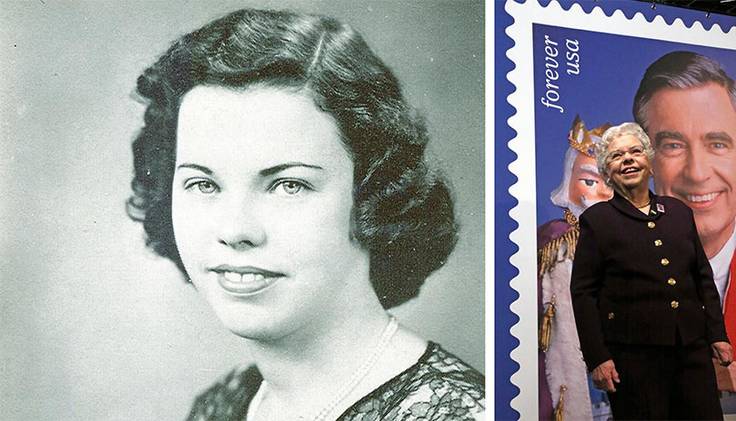
16. Rogers met his wife at Rollins. Joanne Byrd Rogers ’50, a fellow music student, went on to become an accomplished concert pianist. They married in 1952 and had two children, James (born in 1959) and John (born in 1961), and they remained devoted to each other their entire lives. Joanne has been memorialized forever as Queen Sara in the Neighborhood of Make Believe.
18. Rogers pursued television because he despised what he saw: “I got into television because I saw people throwing pies in each other’s faces,” he said. “And that’s such demeaning behavior. And if there’s anything that bothers me, it’s one person demeaning another.”
19. His efforts for children were informed for decades by working with Dr. Margaret McFarland, director of the Arsenal Family and Children’s Center in Pittsburgh, who helped provide depth and rigor to his thinking about children and education.
20. He gave the same acceptance speech for every award he won. During each speech, he took a moment of silence for the audience to remember the people who helped make his show successful.
21. He saved public television. On May 1, 1969, Rogers sat before the U.S. Senate Subcommittee on Communication and explained what exactly his job entailed, defending public television from proposed budget cuts. Sitting in front of Sen. John O. Pastore, Rogers spoke simply about what he hoped to accomplish with his show: to help children deal with their problems in a positive, healthy way and to instill confidence in them.
22. His office had no desk. Rogers thought that having a desk separating him from the people who came through his office would create too much of a barrier. He liked comfy couches that invited cozy conversation.
23. He never endorsed one product or appeared in any advertisements during his career. Rogers thought that commercializing his show would unjustly exploit his special relationship with his young viewers.

24. He continues to inspire Rollins’ curriculum. As part of the College’s innovative general-education curriculum, students take seminars grouped under one of four neighborhoods. These intellectual communities were named partly as a nod to Rogers and partly because of their emphasis on collaborative problem-solving.
25. There is no difference between Mr. Rogers and Fred Rogers, his creator. When asked about his authenticity, he said, “One of the greatest gifts you can give anybody is the gift of your honest self. I also believe that kids can spot a phony a mile away.”
26. His favorite saying was from Antoine de Saint-Exupéry’s The Little Prince: Les essensial est invisible pur les yeux (What is essential is invisible to the eye). He kept a plaque inscribed with these words in his office and on a table at home next to his favorite chair.
27. Once he invited a marine biologist and explorer onto his program to put a microphone in his fish tank. He wanted to show the kids that fish make sounds when they eat. However, while taping the segment, the fish weren’t hungry so the marine biologist started saying, “C’mon,” “It’s chow time,” “Dinner bell!” But Mr. Rogers just waited quietly. The crew thought he’d want to re-tape it, but he insisted on keeping it to show kids the importance of patience.
28. Before working on television, Rogers was ordained as a presbyterian minister. In 1962, he received a Bachelor’s of Divinity degree and was ordained as a minister in the United Presbyterian Church.
29. He preached tolerance first. Whenever he was asked to castigate non-Christians or gays for their differing beliefs, he would instead face them and say, with sincerity, “God loves you just the way you are.”
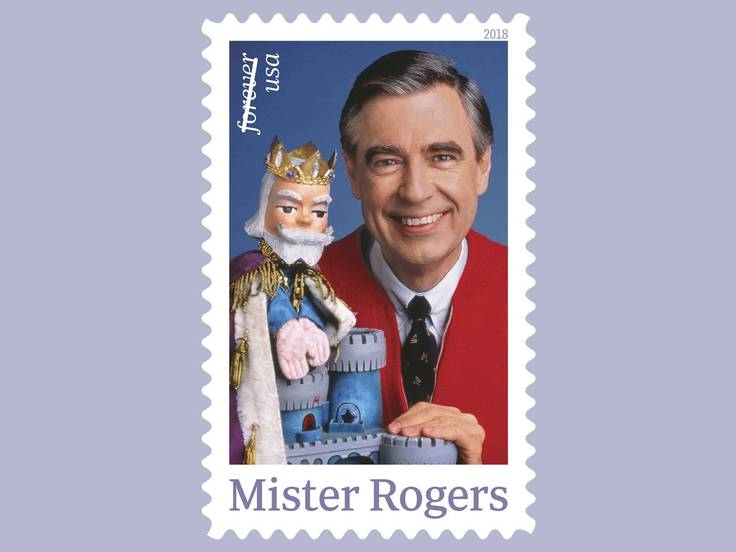
30. Rogers was recognized by the U.S. Postal Service. On March 23, 2018, a forever stamp was released in his honor.
31. Rogers liked break dancing. He even had a few moves of his own.
32. He believed that making the world a better place was everyone’s obligation: “We live in a world in which we need to share responsibility. It’s easy to say, ‘It’s not my child, not my community, not my world, not my problem.’ Then there are those who see the need and respond. I consider those people my heroes.”
33. He always thought of others. On a trip to a PBS executive’s house, he heard the limo driver was going to wait outside for two hours, so he insisted the driver come in and join them, which flustered the host. On the way back, Rogers sat up front, and when he learned that they were passing the driver’s home, he asked if they could stop to meet his family. The driver said it was one of the best nights of his life. The house supposedly lit up when Rogers arrived, and he played piano and bantered with them late into the night. Like with the reporters he befriended over the years, Rogers sent the driver notes and kept in touch with him for the rest of his life.
34. Rogers did many of the voices on his show, including King Friday XIII, Queen Sara Saturday, Henrietta Pussycat, Daniel Striped Tiger, Lady Elaine Fairchild, and Larry Horse.
35. He made the 100 billionth Crayola crayon. One of the most popular episodes of Mister Rogers’ Neighborhood included a segment in which Rogers watches a video showing how crayons are made. In 1996, Rogers traveled to the Binney & Smith factory in Easton, Pennsylvania, to pour the special crayon, which was in the limited-edition color Blue Ribbon. The commemorative replica he received at the event is housed in the Fred Rogers Archive.
36. Rogers said, “Music is my first language.” He used his songs to underscore messages about self-esteem, inclusiveness, and respect for differences.
37. He doled out timeless advice: “In times of stress, the best thing we can do for each other is to listen with our ears and our hearts and to be assured that our questions are just as important as our answers.”
38. Scientists named an asteroid after Fred Rogers, expanding his neighborhood into outerspace with the asteroid “26858 Misterrogers.”
39. Fred Rogers won a Lifetime Achievement Emmy Award in 1997, and Mister Rogers’ Neighborhood won many awards as well, including four Emmys, a George Foster Peabody Award, and induction into the Television Hall of Fame.
40. He gave actor Michael Keaton his big break. Keaton was a stagehand and volunteer, and even appeared twice as a panda.
41. He swam every morning at sunrise. In his birthday suit.
42. His show has stood the test of time. Since 1968, Mister Rogers’ Neighborhood is the longest-running children’s series on television.
43. He was a vegetarian. “I don’t want to eat anything that has a mother,” Rogers said. One of his favorite meals was tofu burgers with beets on the side.
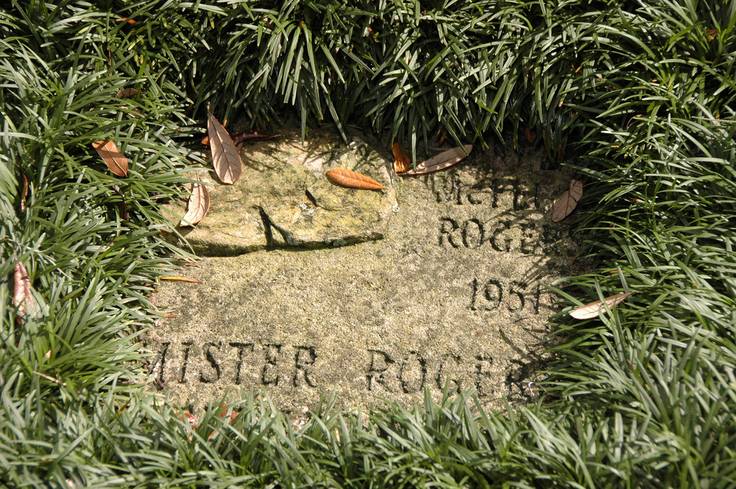
44. He has a permanent place on the Rollins campus—not only in the hearts and minds of the college community but also on the Walk of Fame that rings Mills Lawn. In 1991, Rogers joined the likes of Aristotle and Shakespeare on the Walk of Fame, a collection of more than 500 commemorative stones in the heart of campus. Rogers’ stone reads: “Fred McFeely Rogers; 1951; Mister Rogers’ Neighborhood.”
45. His trademark sneakers were born when he found them to be quieter than his dress shoes as he moved about the set.
46. He gave us the 1994 PBS special Fred Rogers’ Heroes. He introduced audiences to people who were impacting communities in the real world.
47. He was awarded the Presidential Medal of Freedom on July 9, 2002. This was on the same day as Joanne and Fred Rogers’ 50th wedding anniversary.
48. His car was stolen ... and returned. In 1990, The Wall Street Journal reported that his Oldsmobile sedan was stolen while he was babysitting for his grandson. After looking over papers and props he had left in the car, the thieves apparently realized who the owner was. Mr. Rogers found the car parked in front of his house a day or so later. All that was missing was a director’s chair with his name on it.
49. He was named after his grandfather, Fred McFeely, who often said, “You’ve made this a special day by just being yourself. There’s no one else in the world quite like you.”
50. A new documentary about Mr. Rogers hits this year’s Florida Film Festival. The heartwarming film, Won’t You Be My Neighbor, screens on April 11 and April 14, 2018.

The Rollins Guide to Mister Rogers
Explore our favorite stories about Fred Rogers ’51 ’71H, Rollins’ most beloved alumnus.
Read More
May 01, 2024
Tracing Florida Journeys with Leslie Poole
Leslie Poole, an associate professor of environmental studies discusses her new book and green space in Orlando.
May 01, 2024
Bright Lights
Rollins’ 2024 valedictorians share how the College connected them to their purpose, what they’ll miss most, and what’s next in their meaningful lives and productive careers.
April 30, 2024
Shared Values: Mike Gunter Featured in Private University Products & News
Mike Gunter, a political science professor, is spotlighted for merging his interests in political science and environmental concerns.
